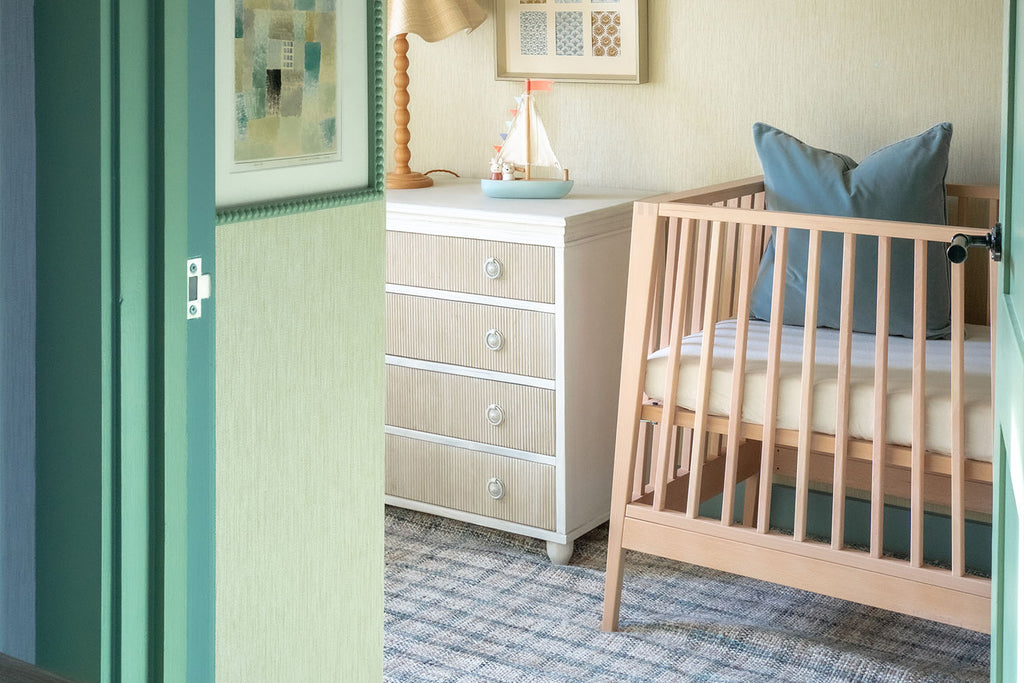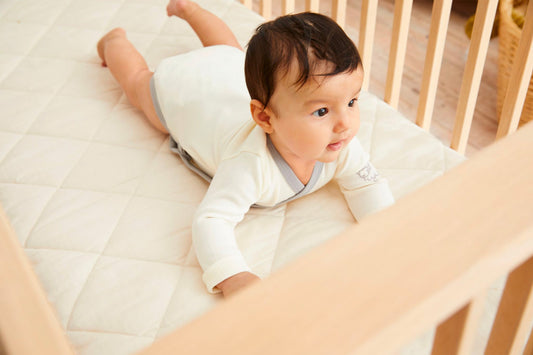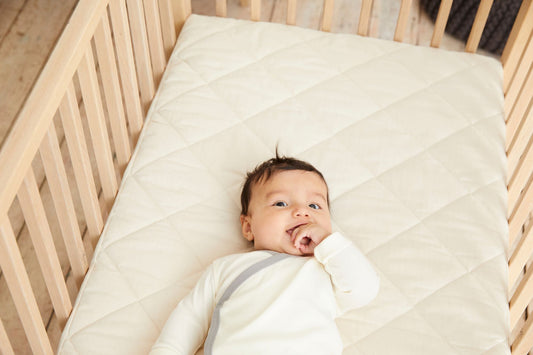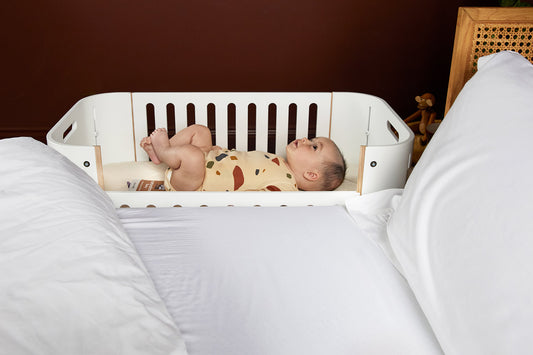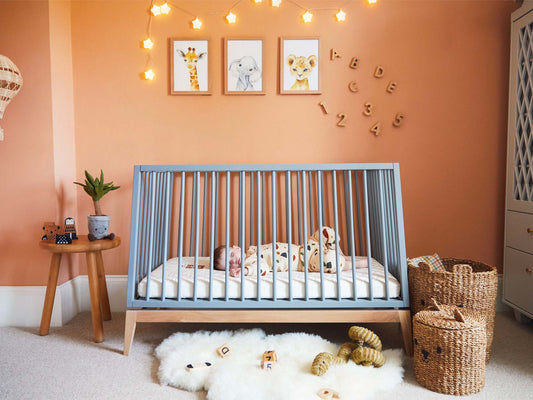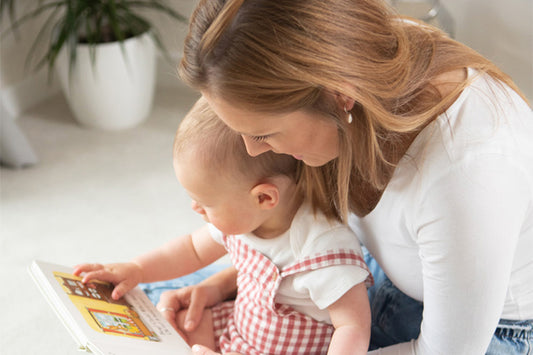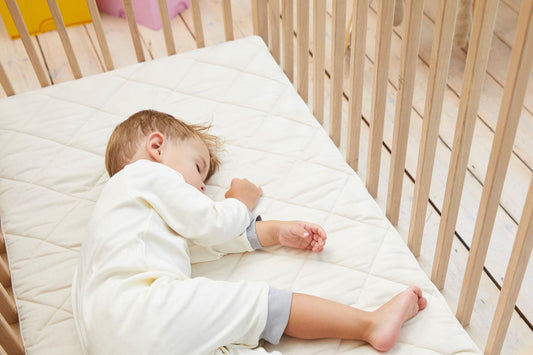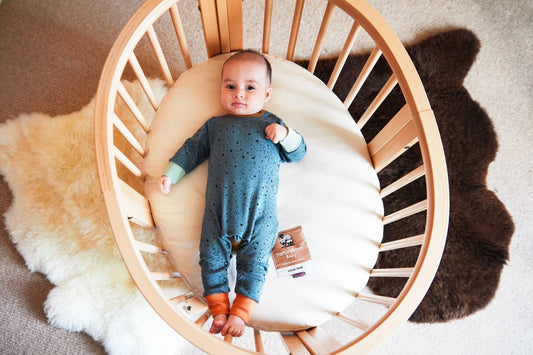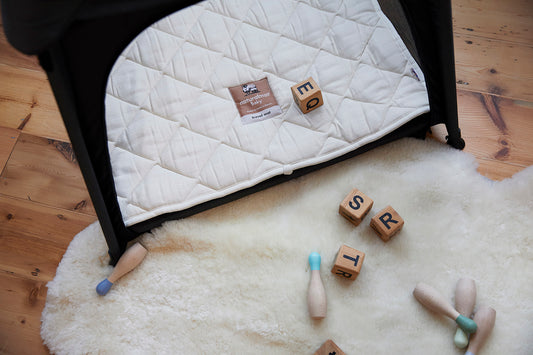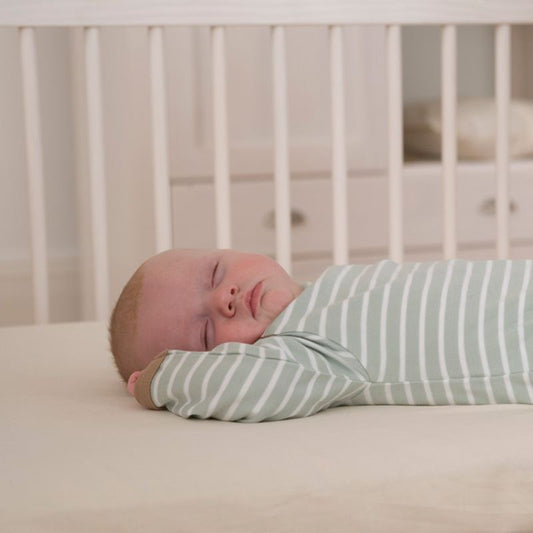Sometimes getting your baby to settle can seem a challenge, especially for new parents. With so much conflicting advice out there, it's very easy to feel overwhelmed, but the good news is there are some simple and effective ways to help your baby self-soothe and settle themselves to sleep.
We've teamed up with Lucy from early years consultancy NEST to share some helpful tips and tricks for self-soothing your baby. Whether you're looking for ways to soothe your baby to sleep, or establish a sleep routine from scratch, you'll find helpful advice and practical techniques to try. So, during their nap, grab a cuppa and have a read.
What is self-soothing?
Essentially, self-soothing is a baby's ability to go to sleep without any external help from you. It's also the ability to settle themselves back to sleep when they naturally wake from their sleep cycles (which is entirely normal).
Parents and carers often read 'self-soothing' as leaving their little one to cry themselves to sleep, not cuddling their newborn baby too much, and having a super strict sleep routine all day, every day. It’s actually far from all of that!
It's important to remember that self-soothing has to be learned along a different timeline for every baby. At NEST, we very much encourage you to cuddle and love your newborn as much as you like - making the most of those precious first moments.
When can babies self-soothe?
If you are keen to try self-soothing with your baby, then you will probably be wondering at what age this is possible. Babies have the ability to start self-soothing around 12 weeks, but each baby will be different in this regard. Before 12 weeks your baby won’t have developed the necessary circadian rhythms that will help them sleep through, especially if they wake up.
At around 4 months, your baby will go through a sleep transition where they will experience a lot of changes in their sleep habits, such as rolling over and crawling. This could also be a good opportunity to start trying to introduce self-soothing habits.
Three baby self-soothing techniques to try
Aside from the 'cry-it-out' technique, there are many other ways to help your little one settle. We very much advocate having a flexible routine and trying as many techniques as possible, as not everything works for everybody.
Now, we don't mean to overwhelm you by giving you too many options. We're here to reduce the anxiety around where to start your self-soothing journey, giving you the confidence to gradually implement a range of techniques to support your little one with learning how to self-soothe.
The Leander Linea Cot with Coco Mat
1. Take note of their sleep cues
Starting from when your baby is a few weeks old, take a note of their sleep cues. A sleep cue is something your little one will do when they are tired and are naturally preparing themselves to sleep. Some examples of sleep cues are rubbing their eyes, yawning, or turning their head to the side (if they're lying down).
If they're being quiet and they start to moan a little, this could be a sleep cue. If they suddenly start to go quiet after being active, this could be a sleep cue too!
When you notice these signs, pop them down in their Moses basket (or a safe sleep space near you) and allow them time and a calm environment to gradually drift off themselves.
2. Use a comforter
A common method parents use to settle their newborn is by using a comforter or cuddle cloth. If your little one has become attached to their comforter, as they get older try leaving it beside them in their sleep space (please be aware of The Lullaby Trust’s safer sleep advice).
As and when they wake from a sleep cycle during the night, your little one can use their comforter to self-settle themselves back to sleep. From around six months of age, developmental changes in your baby can lead to separation anxiety, so their comforter is a great means of ensuring your baby feels safe, secure, and reminded of you.
3. Create a sleep routine
Babies have the ability to start self -soothing around the age of 12 weeks. You can encourage them to self settle by setting up positive sleep associations with a bedtime routine.
A simple bedtime routine could perhaps be a bath, a book and a feed, before putting the baby in a sleep suit and into their sleep space. If it's cooler, you can also safely cover them with a firmly-tucked-in sheet or blanket below shoulder height.
Please note that there is a sleep transition at around 4 months. You will find that your little one's sleep changes during this period - rolling over, crawling and sitting up become regular during this developmental period.
We would encourage you to be as consistent as you can with their sleep routine during this time until things settle down again, which they will.
Our most important tip
Don’t put pressure on yourself to have your little one sleeping through by a certain age - this varies so much for every little one. Every family is different. Every baby is different. The most important thing is that you do what is right for you and your family.
Remember, babies are naturally light sleepers. It’s normal for them to wake when hungry or uncomfortable - so please take your time. To chat this through further or to find out more information, please contact NEST.

About NEST
NEST is an Early Years Consultancy supporting you and your family from pregnancy right through to when your little one starts school. With a team of highly qualified consultants, NEST can support you from packing a hospital bag and preparing for the arrival of your baby, to infant feeding, weaning, sleep, toilet training, managing emotions, and so much more - either as a 1:1 consultation or through one of our workshops.
With a passionate team who ensure that you feel heard, supported and empowered, we work alongside you to offer advice and support which works for you and your little one.
Book a consultation with NEST.

